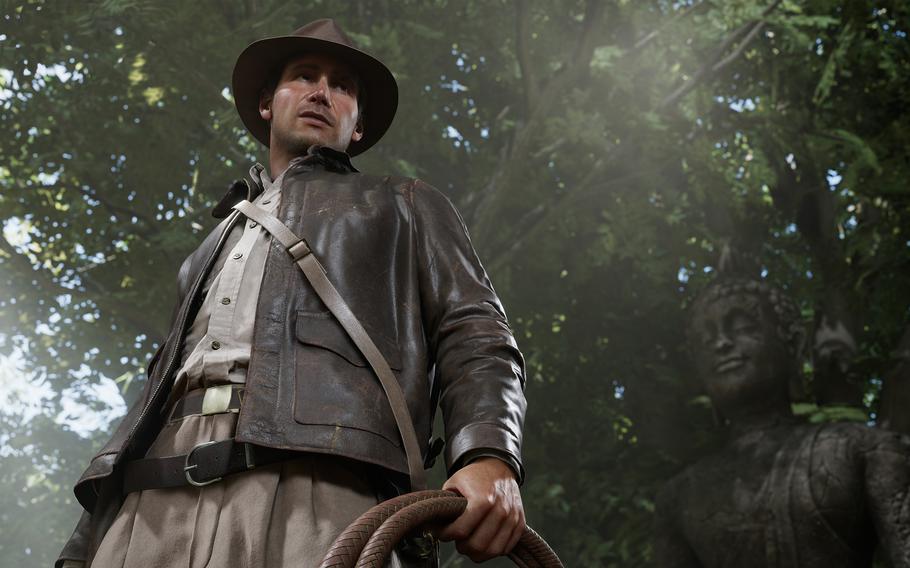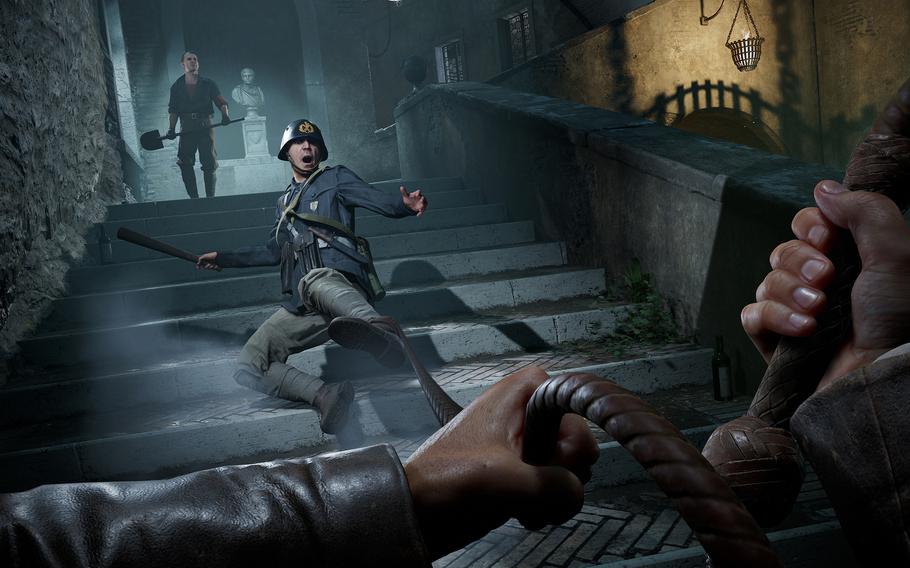
Indiana Jones is back but in a new video game from MachineGames called Indiana Jones and the Great Circle. (Bethesda/TNS)
Indiana Jones has been such an iconic character that he has inspired generations of new heroes, and nowhere is that more evident than in video games. Dozens of projects feature swashbuckling adventurers or daring archaeologists, all of whom owe a debt to George Lucas and Steven Spielberg’s protagonist.
Unfortunately, his popularity on celluloid has never translated to video game pixels. In his place, the likes of Lara Croft, Nathan Drake and others have forged their own franchises, exploring the frontiers of the medium. That has left anyone working on an Indiana Jones title in a curious predicament. How do you create an Indy game that can stand shoulder to shoulder with masterpieces like Uncharted 2 while still bringing something new to the genre?
An authentic Indy adventure
That’s the daunting challenge MachineGames faced when it took up the project, and the developer came up with a brilliant solution. The team didn’t create another Tomb Raider, but rather leaned hard into the lore and the films, capturing the essence of the famed archaeologist’s adventures.
What they crafted was Indiana Jones and the Great Circle, a first-person action game where the developers worked meticulously to put players in the protagonist’s shoes, fulfilling the childhood dreams of a generation. The key to this is that the studio used the likeness of Harrison Ford, whose looks and mannerisms are intrinsic to the character. They cast the stellar Troy Baker, who worked on The Last of Us and Death Stranding, to voice a convincing Indiana Jones. Lucasfilm had final say over the game’s design.
All of this lends the project an air of authenticity that other Indiana Jones projects lack. For example, the Temple of the Forbidden Eye’s animatronic was always a disappointing facsimile.
With that foundation, MachineGames built a campaign that’s a better chapter than the past two movies and feels right at home among the first three films. The Great Circle takes place after “Raiders of the Ark” and finds the archaeologist lamenting a breakup with the love of his life, Marion Ravenwood. Indy couldn’t resist an expedition to retrieve a cat mummy in Siwa, and his absence led to their split, but that same artifact has attracted the notice of several parties, including a giant who ransacks the Marshall College museum, stealing it.
Open-world events
That kicks off an adventure that takes players through several locales but focuses on three major ones in the Vatican, Gizeh and Sukhothai. These are large open-world zones where Indy can purchase items, stumble onto side quests and discover other activities. Along the way, he’ll meet Gina Lombardi, an Italian journalist, who is looking for her linguist sister, Laura. She became entangled with the Nazis. Gina acts as the sidekick and companion on the globe-trotting quest while a rival German archaeologist named Voss plays a deliciously evil antagonist.
Together they explore hidden temples, brawl with Nazis and flee from the danger. The Great Circle has plenty of action sequences, but the developers purposefully wanted to explore Indy’s other talents. They emphasize his intelligence and they do this through dozens of puzzles scattered throughout the world. The side quests fall into two types: Fieldworks, which are long side quests, and Mysteries, which are short localized puzzles. The two offer a good mix of activities that seamlessly fold into the narrative without being a burden.

Indiana Jones’ iconic whip plays a pivotal role in combat and traversal in Indiana Jones and the Great Circle. (Bethesda/TNS)
The Fieldworks are more story-driven and complex. They highlight the stealth gameplay that MachineGames pushes players to pursue via disguises. Although Indy is armed with a revolver, it’s almost always better to sneak behind an opponent and knock him out with a fly swatter or other improvised weapons. Players can hide the bodies and slowly take out fascists methodically. It’s a gameplay loop reminiscent of Thief, Dishonored or The Chronicles of Reddick: Escape from Butcher Bay, a project that some at the studio worked on.
Mysteries are more like concentrated puzzles that revolve around figuring out lock combinations or exploring the detailed world. Unlike Fieldworks, they’re brief and localized to a room. They’re the type of brain teasers that nudge players to use pen and paper to figure out how ancient locks or traps work.
Finishing those activities usually rewards players with Adventure Points. Another way to earn them by taking photos while exploring, which is another pillar of The Great Circle design. With a camera in hand, Indy documents the sites he has seen. Adventure Points are spent on unlocking skills and perks via books found while again searching through every nook and cranny.
Side quests never feel like work
What’s fantastic about the campaign is that the developers give players the opportunity to advance the story, but also lets them go back to previous places as a flashback. It allows completionists to enjoy the adventure while eliminating the feeling of missing out on that power-up or key item. All of this is just a smart way to make sidequests engrossing and rewarding without them feeling like work.
The other half of Indy’s gameplay is the combat, which isn’t as good compared to the rest of the game. Players have the option of going Rambo, but they’ll quickly learn that enemies will overwhelm Indy in a gunfight, so it’s better to go the stealthy route. When players are spotted, they’ll go into first-person fisticuffs, which feels rougher than the shooting gameplay.
Players use the trigger buttons to throw left and right punches and the left bumper to block. It takes a while to adjust to the sloppiness of the fighting, but thankfully, it’s not pushed too much. It’s almost always better to carry a weapon and stalk foes rather than just running up to them and starting a brawl. Again, it’s another decision that feels authentic to the character.
The only element that The Great Circle is missing is a great car chase scene, but the developers more than make up for it with a mid-game sequence that’s spectacular in its scope, and one of the more impressive set pieces. It’s a level that has movie callbacks, but at the same time, it feels new and part of the Indiana Jones legacy. It’s a balancing act MachineGames constantly performs and deftly navigates, giving fans what they desperately wanted since “The Last Crusade” – a satisfying Indy adventure.
Platforms: Xbox Series X and Series S, PC, PlayStation 5 (coming in 2025)
Online: indianajones.bethesda.net/en-US